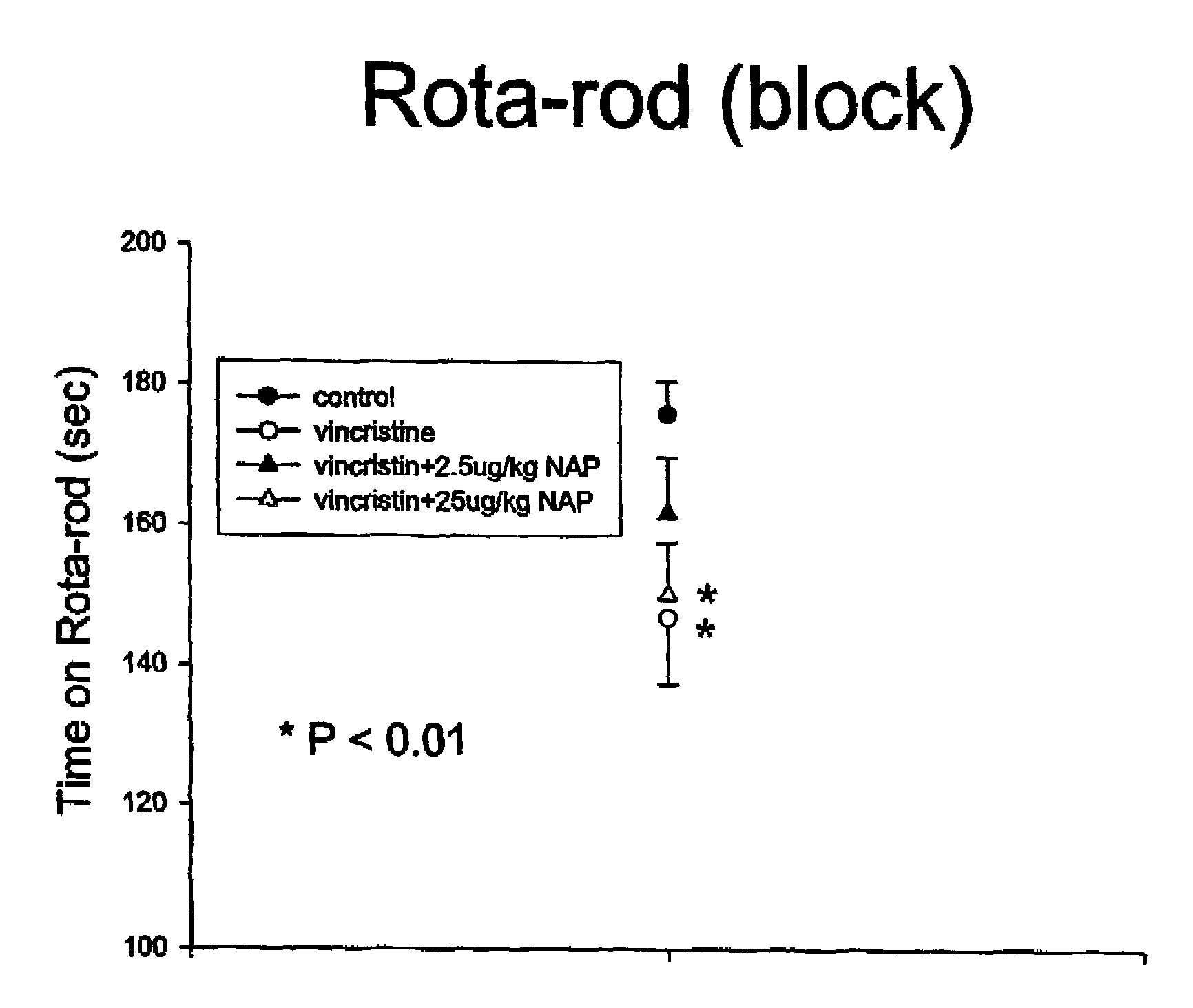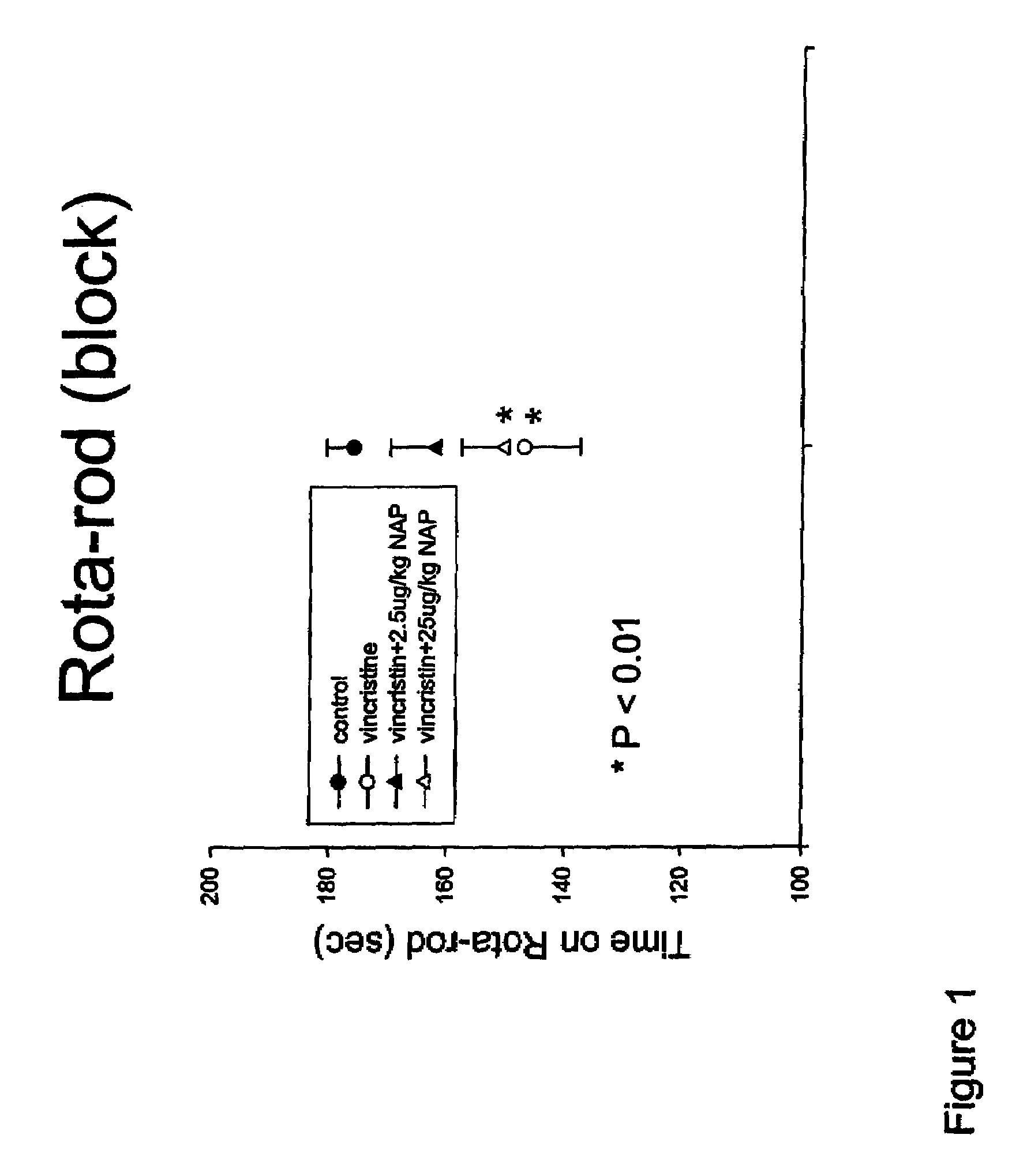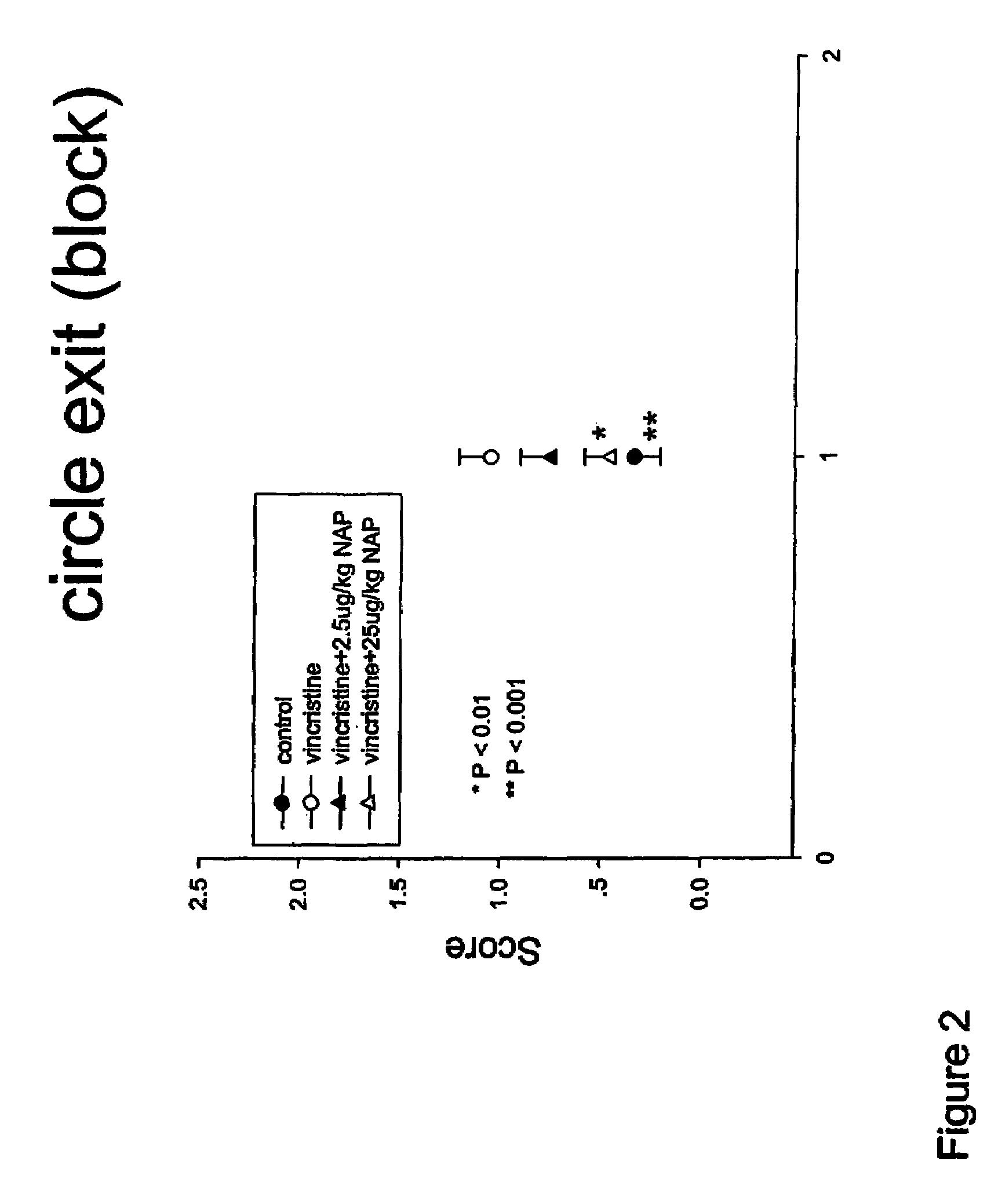Use of ADNF polypeptides for treating peripheral neurotoxicity
a technology of peripheral neurotoxicity and polypeptides, applied in the field of adnf polypeptides, can solve problems such as anxiety reduction
- Summary
- Abstract
- Description
- Claims
- Application Information
AI Technical Summary
Problems solved by technology
Method used
Image
Examples
example 1
Intranasal Administration of NAP Decreases Peripheral Neurotoxicity Induced by Vinca Alkaloids in Rats
[0131]The present study was designed to evaluate if NAP treatment successfully reduced peripheral neurotoxicity induced by the vinca alkaloid vincristine in rats.
Methods
[0132]Rats (200-300 g), divided into 4 groups of 10, were injected with vincristine sulfate dissolved in saline. Stock concentration was 2 mg / ml, pH 4.5-5.2. Aliquots of the drug were diluted daily in saline to concentrations of 0.175 mg / ml and were administered i.p. at a dose of 0.175 mg / kg. NAP was prepared at 0.1 mg / 1.3 ml in saline (0.9% NaCl) and about 0.1 ml was injected subcutaneously to a ˜300 g rat to achieve a dose of 25 microgram / kg (exact calculations were made based on the daily body weights). For 2.5 microgram / kg, the injection solution was diluted by 10 and again 0.1 ml was injected per rat. Treatments took place daily (5 days a week) for ˜3 weeks (20 days) with the dosage calculated on daily body weig...
example 2
Administration of NAP Reduces Neurotoxicity Induced by Chemotherapeutic Agents
[0150]Aim of the study: The aim of the present randomized blind study is to investigate the efficacy of NAP in reducing neurotoxicity induced by the chemotherapeutic agent vincristine in men and women with advanced carcinoma.
Methods:
[0151]Initially 21 patients with advanced carcinoma are randomized between groups A and B. In group A (11 patients) NAP is administered at a dose of 15 mg / 45-70 kg before vincristine infusion (1.4 mg / m2.). In group B (10 patients) the same chemotherapeutic protocol is followed without administration of NAP. Before beginning of chemotherapy and after 6 chemotherapeutic cycles all patients will undergo clinical neurologic examination and nerve conduction study by a neurologist who is blind to the randomization.
Results:
[0152]Clinical neurologic examination is assessed neurotoxicity indicators such as tendon reflexes, superficial sensory perception and muscle strength, as well as n...
example 3
Randomized Trial with or without NAP to Reduce Neurotoxicity Side Effects Under Chemotherapy with Oxaliplatin (L-OHP), FA / 5-FU
[0154]Aim of the study: Chemotherapy with L-OHP, FA, 5-FU has a high activity in advanced colorectal cancer (ACRC). The main dose-limiting toxicity of chemotherapy with L-OHP is a peripheral sensory neuropathy. In this study the patients (pts) will receive a chemotherapy with L-OHP, FA and 5-FU with or without NAP. The question is whether a reduction of side effects of neurotoxicity is seen after application of NAP.
Materials and Methods
[0155]We include 27 patients with ACRC. In arm A chemotherapy is applied with L-OHP 85 mg / m2 d1, FA 500 mg / m2 d1+d2 and 5-FU 4000 mg / m2 over 48 h continuous infusion as biweekly schedule. In arm B, 15 mg / 45-70 kg NAP is given over 10 min i.v. before application of the same schedule of chemotherapy. Investigation of toxicity, neurological examination and a blood count is performed before every cycle. For a daily documentation of...
PUM
| Property | Measurement | Unit |
|---|---|---|
| diameter | aaaaa | aaaaa |
| molecular weight | aaaaa | aaaaa |
| concentrations | aaaaa | aaaaa |
Abstract
Description
Claims
Application Information
 Login to View More
Login to View More - R&D
- Intellectual Property
- Life Sciences
- Materials
- Tech Scout
- Unparalleled Data Quality
- Higher Quality Content
- 60% Fewer Hallucinations
Browse by: Latest US Patents, China's latest patents, Technical Efficacy Thesaurus, Application Domain, Technology Topic, Popular Technical Reports.
© 2025 PatSnap. All rights reserved.Legal|Privacy policy|Modern Slavery Act Transparency Statement|Sitemap|About US| Contact US: help@patsnap.com



